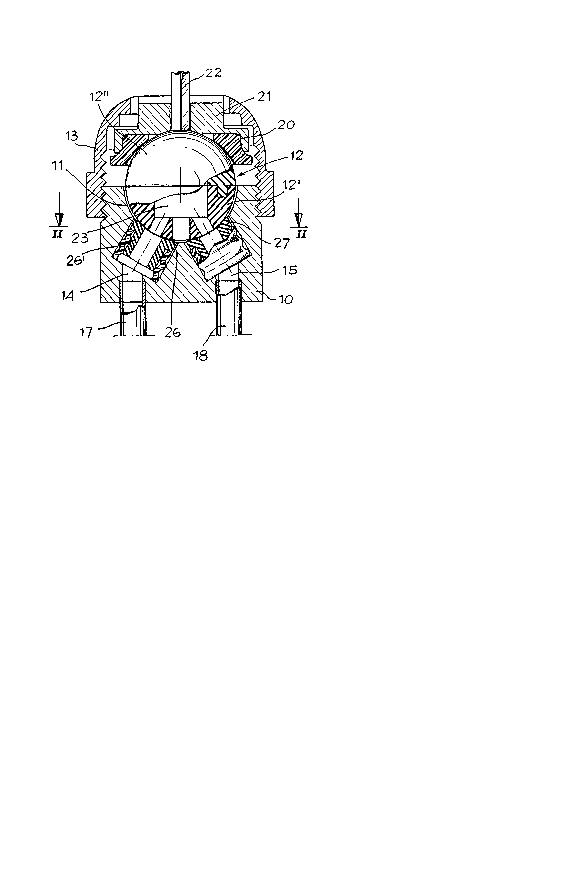Une partie des informations de ce site Web a été fournie par des sources externes. Le gouvernement du Canada n'assume aucune responsabilité concernant la précision, l'actualité ou la fiabilité des informations fournies par les sources externes. Les utilisateurs qui désirent employer cette information devraient consulter directement la source des informations. Le contenu fourni par les sources externes n'est pas assujetti aux exigences sur les langues officielles, la protection des renseignements personnels et l'accessibilité.
L'apparition de différences dans le texte et l'image des Revendications et de l'Abrégé dépend du moment auquel le document est publié. Les textes des Revendications et de l'Abrégé sont affichés :
| (12) Demande de brevet: | (11) CA 2016978 |
|---|---|
| (54) Titre français: | ROBINET MITIGEUR A TOURNANT SPHERIQUE |
| (54) Titre anglais: | BALL MIXING TAP FOR COLD AND HOT WATER |
| Statut: | Réputée abandonnée et au-delà du délai pour le rétablissement - en attente de la réponse à l’avis de communication rejetée |
| (51) Classification internationale des brevets (CIB): |
|
|---|---|
| (72) Inventeurs : |
|
| (73) Titulaires : |
|
| (71) Demandeurs : |
|
| (74) Agent: | ROBIC AGENCE PI S.E.C./ROBIC IP AGENCY LP |
| (74) Co-agent: | |
| (45) Délivré: | |
| (22) Date de dépôt: | 1990-05-17 |
| (41) Mise à la disponibilité du public: | 1991-01-11 |
| Licence disponible: | S.O. |
| Cédé au domaine public: | S.O. |
| (25) Langue des documents déposés: | Anglais |
| Traité de coopération en matière de brevets (PCT): | Non |
|---|
| (30) Données de priorité de la demande: | ||||||
|---|---|---|---|---|---|---|
|
- 10 -
"IMPROVED BALL MIXING TAP FOR COLD AND HOT WATER"
ABSTRACT
Mixing tap for hot and cold water fitted with
a mixing ball with inlet holes matched with the
separate hot and cold water feed pipes and outlet
holes delivering the mixed water to a spout. At
least the part of the ball with holes is made of a
ceramic material and interacting with seals also
made of ceramic material and coordinated to the hot
and cold water feed pipes. Each ceramic seal is sup-
ported by an elastomer bellow type element acting
both as a spring pushing the seal against the ball
and as a radial packing around the seal itself.
Note : Les revendications sont présentées dans la langue officielle dans laquelle elles ont été soumises.
Note : Les descriptions sont présentées dans la langue officielle dans laquelle elles ont été soumises.

2024-08-01 : Dans le cadre de la transition vers les Brevets de nouvelle génération (BNG), la base de données sur les brevets canadiens (BDBC) contient désormais un Historique d'événement plus détaillé, qui reproduit le Journal des événements de notre nouvelle solution interne.
Veuillez noter que les événements débutant par « Inactive : » se réfèrent à des événements qui ne sont plus utilisés dans notre nouvelle solution interne.
Pour une meilleure compréhension de l'état de la demande ou brevet qui figure sur cette page, la rubrique Mise en garde , et les descriptions de Brevet , Historique d'événement , Taxes périodiques et Historique des paiements devraient être consultées.
| Description | Date |
|---|---|
| Le délai pour l'annulation est expiré | 1997-05-20 |
| Demande non rétablie avant l'échéance | 1997-05-20 |
| Réputée abandonnée - omission de répondre à un avis sur les taxes pour le maintien en état | 1996-05-17 |
| Demande publiée (accessible au public) | 1991-01-11 |
| Date d'abandonnement | Raison | Date de rétablissement |
|---|---|---|
| 1996-05-17 |
Les titulaires actuels et antérieures au dossier sont affichés en ordre alphabétique.
| Titulaires actuels au dossier |
|---|
| GALATRON S.R.L. |
| Titulaires antérieures au dossier |
|---|
| ALESSIO ORLANDI |